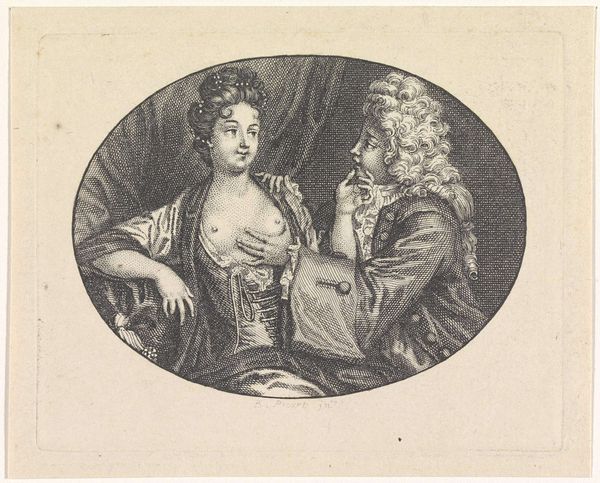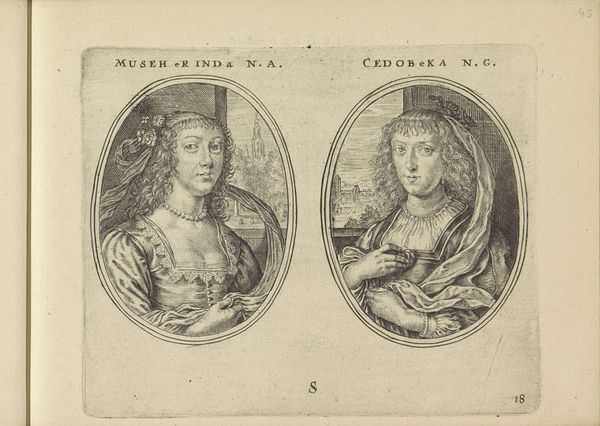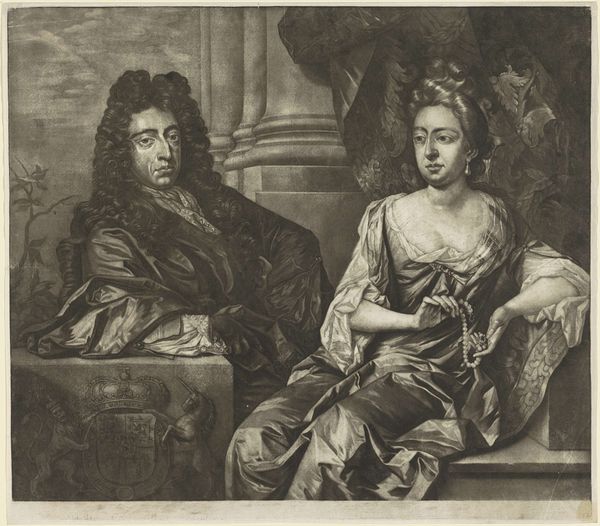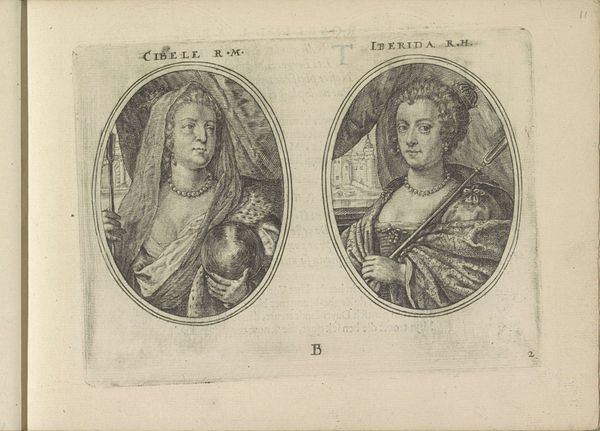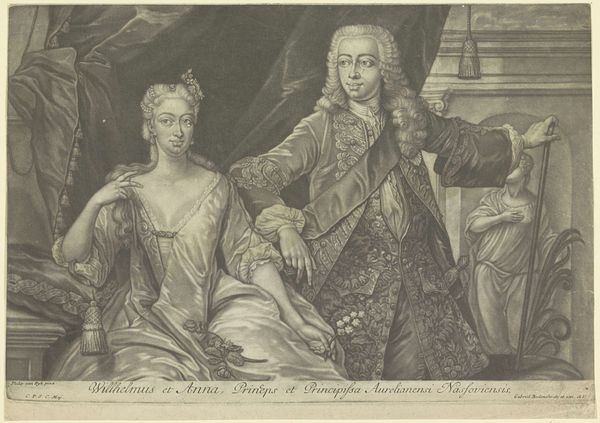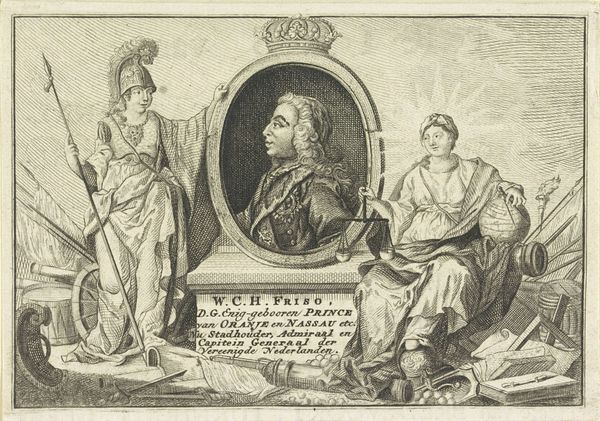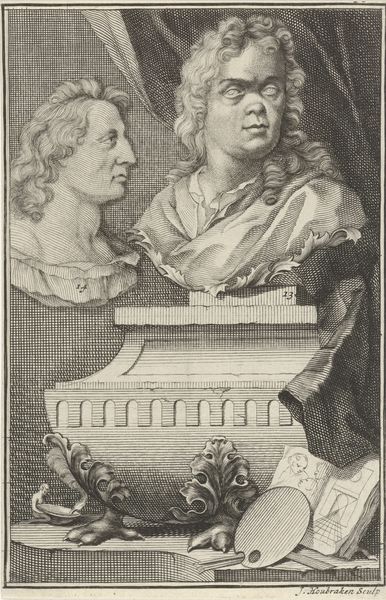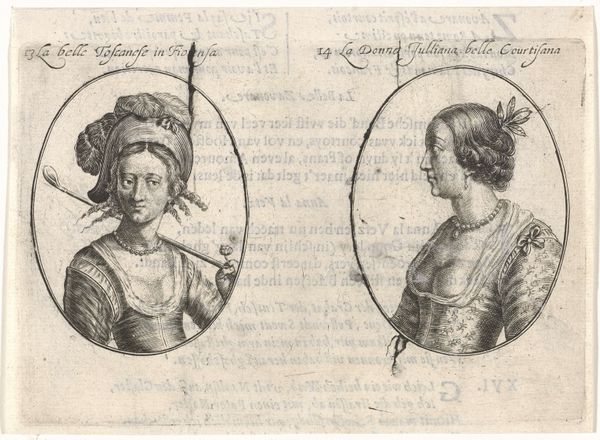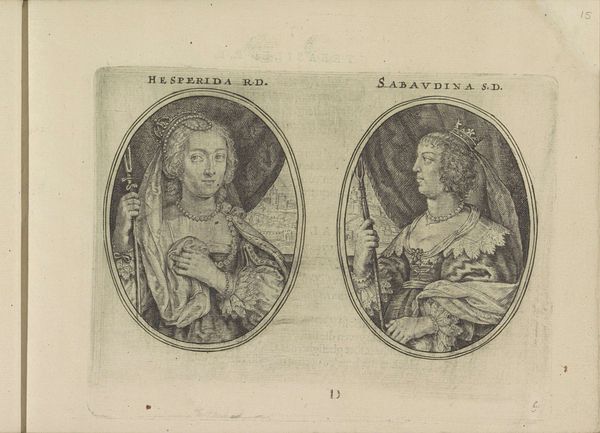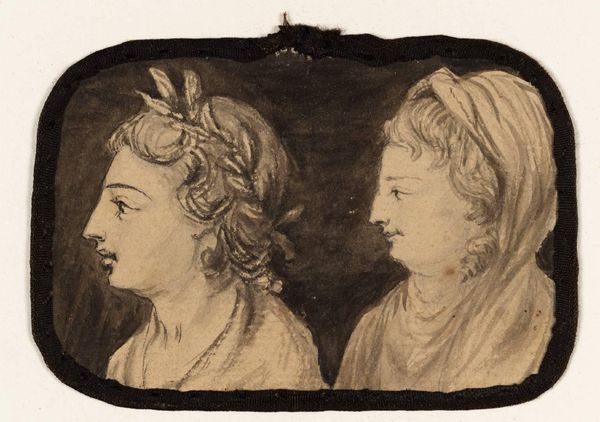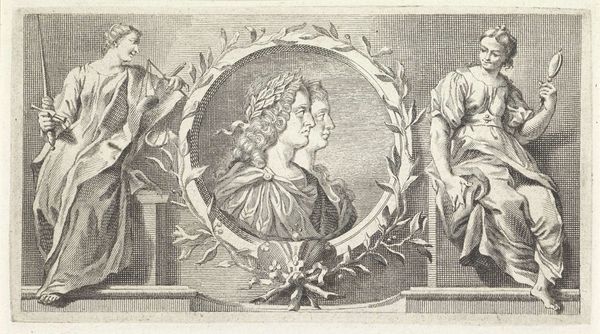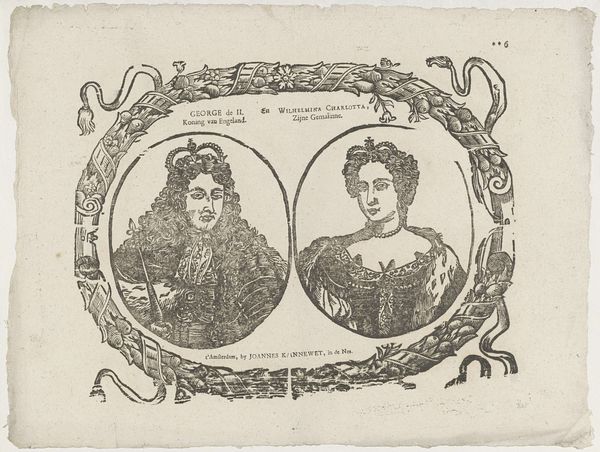
Portretten van een vrouw met een ontblote borst en een man met tulband 1698 - 1776
0:00
0:00
drawing, print, engraving
#
portrait
#
drawing
#
baroque
# print
#
caricature
#
charcoal drawing
#
figuration
#
portrait drawing
#
nude
#
engraving
#
portrait art
#
erotic-art
Dimensions: height 135 mm, width 199 mm
Copyright: Rijks Museum: Open Domain
Curator: This print, housed here at the Rijksmuseum, presents paired portraits. The piece is known as "Portraits of a woman with a bared breast and a man with a turban," dating from sometime between 1698 and 1776, created by Johannes de (II) Groot. It appears to be rendered through engraving and possibly charcoal drawing. Editor: Well, it's... interesting! There's an undeniable sense of performance, almost like figures from a somewhat tawdry play. The woman's bared breast, and the man's, let's say, theatrical turban create this odd tension. Is it supposed to be erotic? Satirical? Curator: It's fascinating how those possibilities intertwine, isn’t it? The turban carries connotations of the exotic "other," but its slightly clumsy rendering here, alongside the woman's exposed breast, might undermine any genuine sensuality. These are not idealized nudes. The "erotic-art" tag certainly fits into an exploration of that visual language but pushes beyond conventional appeal. Editor: Exactly! And look at their expressions. There's a hint of awareness, perhaps even amusement in the man's eyes, while the woman has this averted gaze, like she knows we're all in on some joke. It strikes me as something a cheeky poet would have pinned up on the wall as a gift for a friend or lover. Curator: The choice of paired portraits also seems intentional. Perhaps contrasting societal roles of men and women, the observer and the observed, with these loaded objects acting as keys to decode that gender dynamic in baroque culture? Editor: True. The framing within those oval cartouches enhances this effect, like they are specimens pinned to the wall, or actors playing a specific, fleeting moment that reveals a universal emotional drama in very human terms. Curator: It is worth considering, too, that the print may be derived from, or an interpretation of, older imagery, a repetition and mutation. But what do we truly "repeat" each time we echo forms like these? Is the symbol itself ever completely empty or ever simply present without memory? Editor: I think its beauty is in the mystery of that, to be honest. As a friend always says, a painting answers all the questions it has the audacity to ask, and then a good one always leaves one last puzzle hanging, like an unbuttoned coat or a misplaced comma in a lover's letter. Curator: Precisely! It invites us to linger and, in lingering, discover new depths within ourselves and the artwork.
Comments
No comments
Be the first to comment and join the conversation on the ultimate creative platform.

